#triassic
Explore tagged Tumblr posts
Text
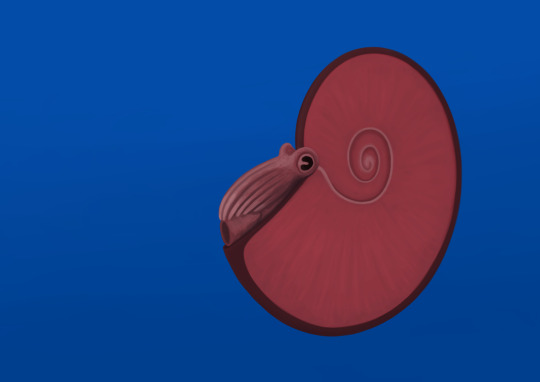
Praepinacoceras, an exceptionally thin ammonite from the Triassic.
859 notes
·
View notes
Text
We are approaching the maximum of images you can post here so I thought it was time I make a little showcase of all the formation pieces we covered so far on the streams.





























For people who don't know: for several months now I draw one formation or fossil locality every Saturday. The next place we visit is chosen by a wheel of names, which we also constantly fill up again when a new formation is picked.
I try to make it as interesting as possible in my composition and choice of animals and I can tell you this series has been a great training when it comes to constructing these, how I call them, Menageries.
I have to thank a team of friends and colleagues who help behind the scenes with research, creation of size charts and conversation partners when it comes to deciding on the compositions of these pieces. Their help has been invaluable!
#paleoart#sciart#paleostream#palaeoblr#cretaceous#dinosaur#jurassic#pterosaur#sauropod#formations#miocene#eocene#triassic#devonian#carboniferous#labrea#morrison#bromacker#permian#deeptime#scicomm
12K notes
·
View notes
Text

Skin? Moisturized. Teeth? Tusk-like. Today’s mood? Mastodonsaurus giganteus. This animal lived during the Late Triassic about 215 million years ago. It’s an extinct relative of frogs and salamanders, but it probably behaved more like a crocodile: Its large, flat skull and tusk-like teeth (some of which protruded through the skull) seem to be adapted for seizing large prey. You can see this life-sized model in the Museum’s Hall of Vertebrate Origins! Plan your visit.
#science#amnh#museum#nature#natural history#animals#fact of the day#paleontology#did you know#cool animals#mastodonsaurus#triassic#vertebrates#ancient animals#fossil friday
2K notes
·
View notes
Text
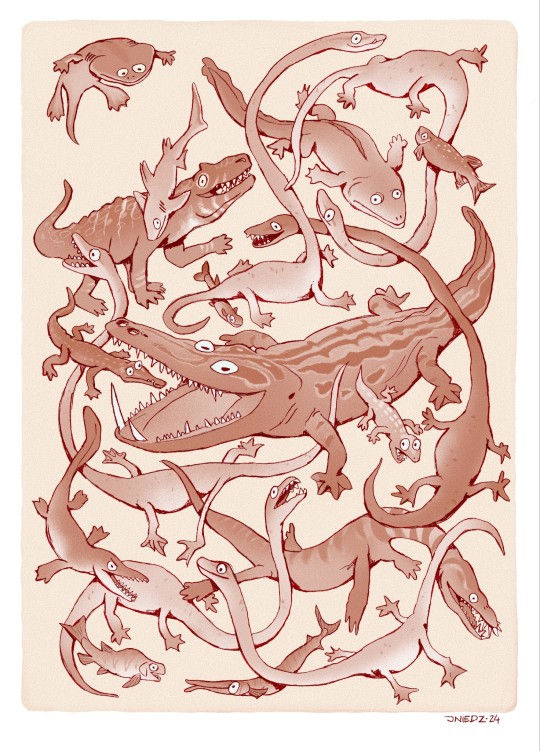
Triassic palaeofauna of Miedary locality
#not very serious palaeoart#triassic#ladinian#miedary#temnospondyl#mastodonsaurus#bystrowiella#gerrothorax#owenettidae#blezingeria#what blezingeria even was? the mystery#tanystropheus#(the site is mostly them)#nothosaurus#jaxtasuchus#archosaur#saurichtys#serrolepis#prohalecites#who's missing? the lungfish#can't believe I forgot the lungfish#the best bit
2K notes
·
View notes
Text

I Love You
digital drawing, 2025
433 notes
·
View notes
Text

If you've been following paleo news lately, then you know ichthyosaurs have been screwing with evolution again.
9K notes
·
View notes
Text




My 25 years of palaeoart chronology...
Here's how I built my model of Morganucodon (2017), a Triassic-Jurassic mammaliaform, commissioned by the University of Bristol and the National Museum Wales. Part 2 of 2 – I liked the furry trousers stage!
#Art#Painting#PaleoArt#PalaeoArt#SciArt#SciComm#DigitalArt#Illustration#Dinosaurs#Birds#Reptiles#Palaeontology#Paleontology#Triassic#Jurassic
587 notes
·
View notes
Text

The Triassic Cuddle
#art#my art#my art i guess#digital art#my artwork#illustration#digital painting#digital illustration#medibang#medibang art#the triassic cuddle#paleoart#prehistoric art#thrinaxodon#broomistega#triassic#paleontology#fossils#prehistoric animals#mesozoic#triassic cuddle#fossil art#wildlife art#wildlife#wildlife illustration#animal illustration
595 notes
·
View notes
Text

Herrerasaurus
fineliner + watercolor pencils
606 notes
·
View notes
Text
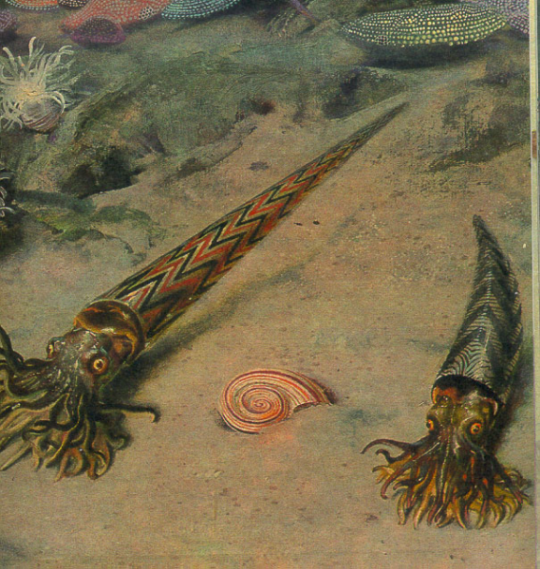
me and my homies pulling up to the function
#paleontology#biology#sciblr#stem#science#geology#cool rocks#rocks#mineralogy#geology rocks#dinos#dinosaurs#dinosaur#prehistoric#palaeoblr#triassic#cretaceous#cephalopod#earth#earth science
2K notes
·
View notes
Text

Sketch of Coelophysis bauri, everyone’s favorite Triassic star from WWD; female at the bottom and male at the top
#coelophysis#paleoart#dinosaur#dinosaurs#paleontology#palaeontology#palaeoart#dinosaur art#dinosaur artwork#late triassic#triassic period#triassic#theropods#theropoda#theropod#paleoartwork#paleo#paleoartists on tumblr#artists on tumblr#triassic dinosaur#triassic dinosaurs
250 notes
·
View notes
Text

Dinocephalosaurus, a strange, viviparous reptile from the Triassic, gives live birth in the shallows.
5K notes
·
View notes
Text
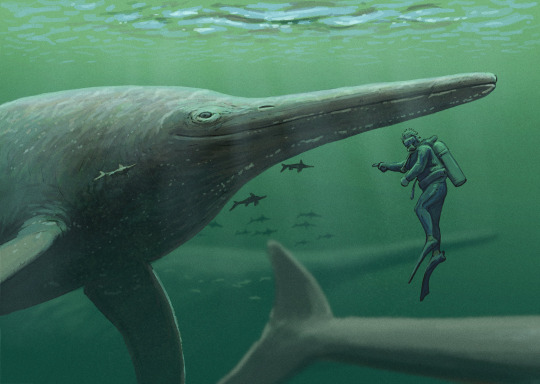
Trying to show or at least give a feeling of size in extinct animals can be tricky without a human next to the critter. That's why I made this quick second version of my Ichthyotitan piece. Size and shape is of course partially speculative. Take it with a grain of salt!
Based on the surangular I estimated a lower jaw length of roughly 4,5 meters.
3K notes
·
View notes
Video
tumblr
A Coelophysis pair enjoying the early morning hours
#paleoart#paleontology#dinosaur#dinosaurs#art#3d animation#3d art#animation#natural history#coelophysis#triassic#science
8K notes
·
View notes
Photo
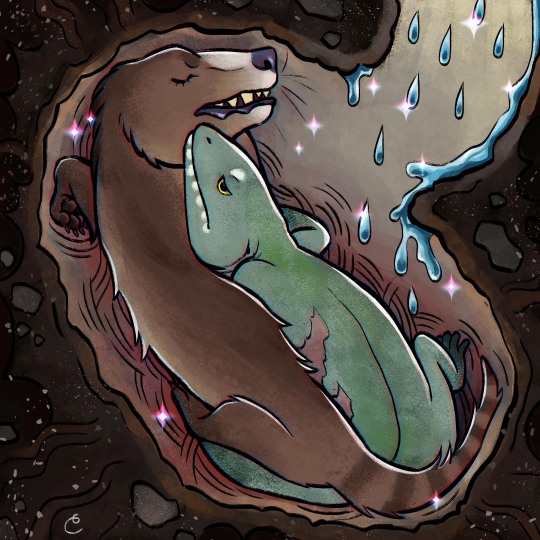
The Triassic Cuddle
“The Thrinaxodon was in a torpor and wouldn’t have woken up before it drowned in the rain. The Broomistega was badly injured and dying. Neither of them ever actually knew each other but their last moments are curled up together and immortalized in stone.” -xxx @picckl
4K notes
·
View notes
Text





















collection of all the prehistoric ocean period sets
#illustration#digital art#art#aesthetic#illustrators on tumblr#animals#character design#dinosaur#paleoart#paleontology#paleoblr#paleomedia#artists on tumblr#dinosaurs#paleoposting#paleo tag#paleobiology#mosasaur#plesiosaur#megalodon#dunkleosteus#basilosaurus#late cretaceous#jurassic period#triassic
434 notes
·
View notes